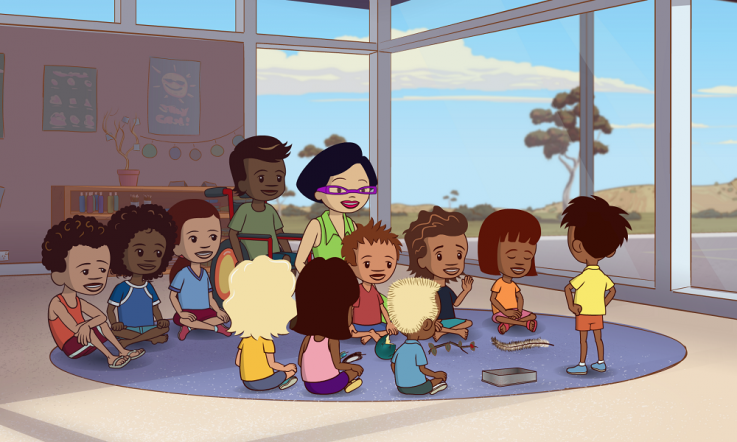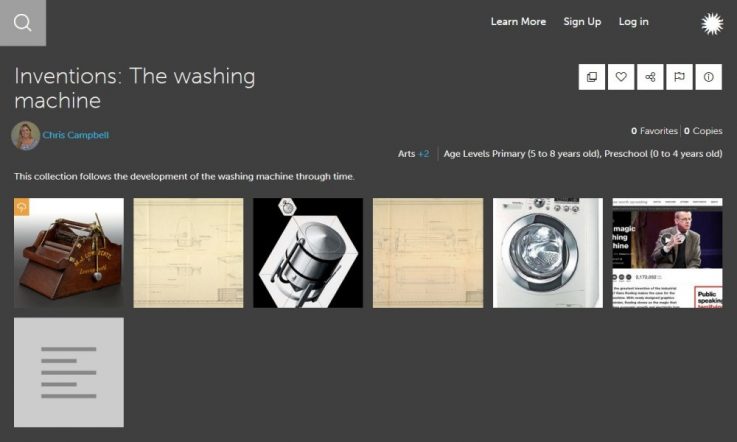The promotion of Aboriginal and Torres Strait Islander histories and cultures as a cross-curriculum priority in the Australian Curriculum provides both a challenge and an opportunity for teachers.
Many teachers struggle to identify and use appropriate resources, and to create contexts in which such knowledge can be embedded. Educators with limited connections to Aboriginal and Torres Strait Islander peoples and cultures may require support to incorporate Indigenous knowledge respectfully and appropriately in the classroom.
Rather than just an add-on, the histories and cultures of Indigenous people can be integrated into each learning area to bring new perspectives to existing knowledge and practice, and to encourage interesting and innovative ways to incorporate this knowledge.
An archive of authentic texts
The Living Archive of Aboriginal Languages contains authentic language materials which can assist in resourcing and supporting teachers to meet this challenge across all areas of the curriculum. The open access archive contains thousands of authentic texts in Indigenous languages of the Northern Territory, many with English translations and rich illustrations. The materials cover a vast array of topics, from traditional stories, ethnobiology, history, bush food and medicine, tales of contemporary life, and translations of English stories.
Many of the resources were produced during the era of bilingual education in the Northern Territory, beginning in the 1970s, and were mostly created by Indigenous people for Indigenous children who spoke an Indigenous language at home, and were learning to read and write in their own language before transitioning to English literacy.
The Living Archive project came out of concern for the materials which were no longer in active use in schools due to policy shifts away from bilingual education (Simpson, Caffery & McConvell, 2009). The project team visited many of these remote schools and collected books for scanning, as well as gathering materials from libraries and private collections. In many of these locations, the materials were highly vulnerable, scattered around hot sheds and dusty storerooms, with no catalogues available to identify what books had been created. A second round of government funding enabled the inclusion of materials from other NT communities which didn't have bilingual programs, but were still creating language resources.
Preservation and online access
The goals of the Living Archive are twofold: firstly the preservation of these materials of great cultural, linguistic and pedagogical value. Secondly, the online publication of these materials makes them accessible to a wide audience, including the communities of origin, educators and researchers, as well as the general public, who may not have been aware of the existence of such a vast range of written materials in Australian Indigenous languages. The materials are hosted on Charles Darwin University Library's digital repository, which ensures sustainability of access beyond the limited cycle of funding. The project is still adding new materials to the collection, and continuing to work on ways to promote engagement with the resources, via a blog and sample lesson plans.
Teachers and students can access the materials directly through the web interface, at no cost and with no login required. The site can be navigated via a map of language areas, by browsing by place and language, as well as searching words in English or in any of the 50 Indigenous languages included in the archive.

Complete versions of all materials in PDF and plain text formats can be viewed online or downloaded and shared under a Creative Commons Attribution Non-Commercial No-Derivatives licence.
Materials to support teachers across the curriculum
For teachers, the Living Archive contains materials which can be used to support teaching across all learning areas of the Australian Curriculum.
For example, in the area of Health and Physical Education, there are several books relating to popular sports and games in remote communities. An interesting classroom activity would be to explore different perspectives on some of the health issues affecting Indigenous communities around Australia, and see how these are presented from the perspective of the Indigenous people themselves. This could include discussion of how sickness is caused, through exploring books in the archive which explain some common diseases, advice about hygiene and health, as well as resources about bush foods and medicine, which could also be used as part of a science curriculum.
A History teacher can draw on stories told by and for Indigenous Australians on topics such as how people lived prior to colonisation, early interactions with explorers and missionaries, stories of massacres, and personal reminiscences of World War II. Such stories invite students to compare historical traditions from Western and Indigenous perspectives. Examples covering each of the learning areas are available on the project website and in an open access article published in the Learning Communities Journal (Bow, 2016).
The Living Archive allows teachers and students around Australia to easily access a vast range of literature, art, culture and language, leading them to think about different ways to consider Indigenous knowledge in their own contexts. Schools and teachers with limited or no connection to Indigenous peoples can use the materials in the classroom, and those who have connections can also use these resources to support or develop relationships and incorporate knowledge directly from Indigenous authorities — leading to further exploration of opportunities for connection with local knowledge custodians, research into culture and language of the local area, and understanding of language maintenance and revitalisation.
References
Bow, C. (2016). Using authentic language resources to incorporate Indigenous knowledges across the Australian Curriculum. Learning Communities: International Journal of Learning in Social Contexts [Special Issue: New Connections in Education Research], 20, 20-39. DOI: http://doi.org/10.18793/LCJ2016.20.03.
Simpson, J., Caffery, J., & McConvell, P. (2009). Gaps in Australia's Indigenous language policy: Dismantling bilingual education in the Northern Territory. Discussion Paper 24, Canberra: Australian Institute of Aboriginal and Torres Strait Islander Studies.
Think about a future topic or unit of work you’re teaching: How could you integrate the histories and cultures of Indigenous people into this learning area? How will you identify appropriate resources to support teaching and learning?



